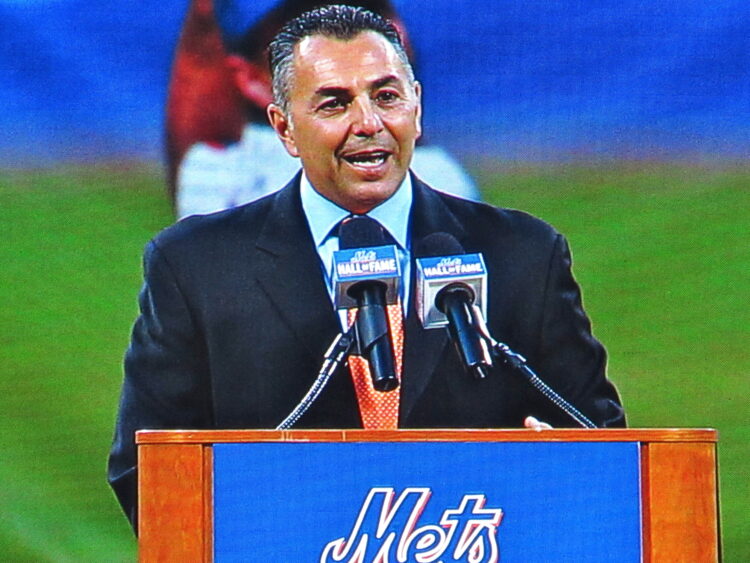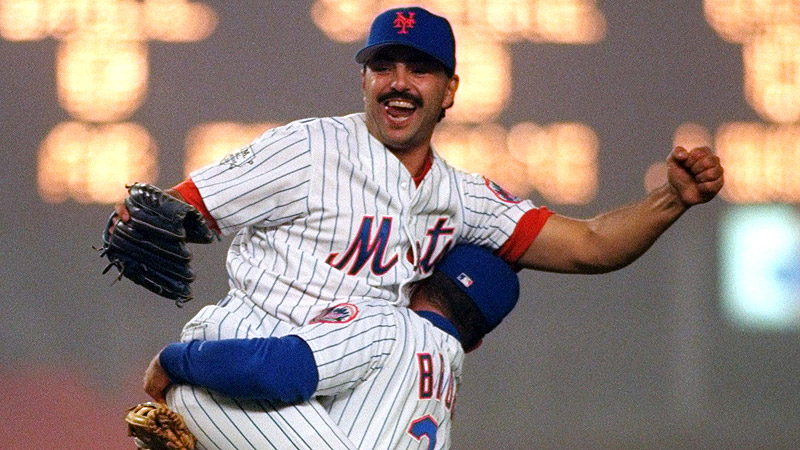
The 1990s were one of the biggest roller coaster rides in Mets history. The decade began with the team saying good-bye to Davey Johnson, Keith Hernandez, and Gary Carter as the best run in franchise history was nearing an end. Their attempts to revive the franchise would end with “The Worst Team Money Could Buy.”
The nadir of Mets baseball with Vince Coleman throwing firecrackers at fans and Bret Saberhagen dousing reporters in bleach would become all the worse as we would see the first ever World Series cancelled due to a strike. There would be hopes with Generation K only to see Jason Isringhausen, Bill Pulsipher, and Paul Wilson suffer injury after injury.
Somehow through all of that, the Mets would re-emerge under the guidance of Bobby Valentine. After the original collapse of 1998, the team would win a play-in game, and they would play in their first postseason in over a decade.
Through it all, fans would be treated to some truly great seasons and performances. With all that happened, here is the 1990s All Decade Team.
Todd Hundley, C
From an individual offensive performance standpoint, the 1996 season was one of the best in Mets team history. Front and center of that was Hundley who would then hold the team and single season Major League catcher’s home run mark with 41 homers. That was part of a two year stretch where Hundley was an All-Star, and he hit 71 homers.
Prior to the offensive outburst, Hundley was a strong defensive catcher. At his best, he was known as a good framer who could throw out base runners around league average. Mostly, even at a young age, he was able to handle a pitching staff. In the end, the shame for Hundley was he would get hurt, and worse yet, he could not adapt to left field.
Through it all, Hundley played eight years for the Mets hitting .240/.323/.443 with a 9.2 WAR. Arguably, he is the best homegrown catcher in Mets history.
Honorable Mentions: Mike Piazza (true franchise player obtained in 1998); Todd Pratt (walk-off homer in 1999 NLDS)
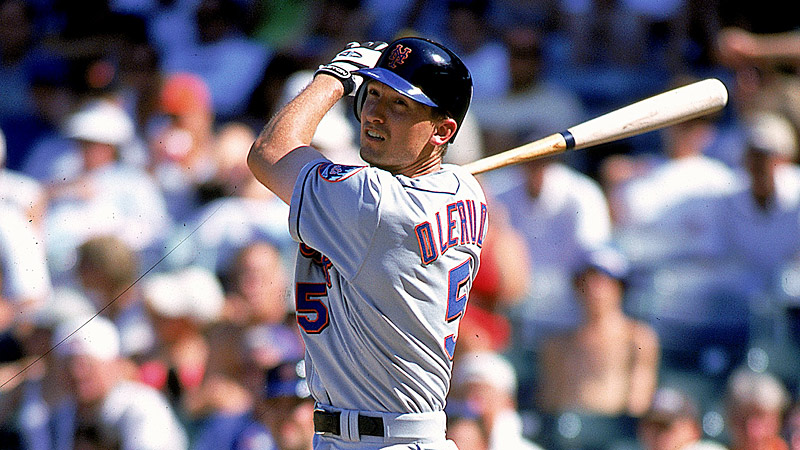
John Olerud, 1B
If Olerud only played the 1998 season for the New York Mets, his 7.6 bWAR that season would have rated him at that point as the fourth best Mets first baseman of all-time. Of course, Olerud was the more than the 1998 year when he set Mets single-season records in average and OBP which still stand today.
Olerud was the first major piece of 1999 team who went to the NLCS. In his three years with the Mets, he would hit .315/.421/.501 with a 142 OPS+. Like with his holding the single season records, he is the Mets all-time leader in batting average and OBP. Additionally, he is the Mets all-time leader in OPS. He’s also in the Top 10 in slugging, OPS+, and WPA.
Of course, Olerud was more than his bat. He was also a terrific defensive first baseman. His ability at the position allowed Valentine to implement his attack of having the first baseman hold on runners while not standing on the bag. Olerud was also the first baseman who was a part of the best defensive infield of all-time.
What separated Olerud from most was just how clutch he was. He came up big countless big times for the Mets with his biggest hit being the game winning hit against John Rocker in Game 4 of the NLCS.
Honorable Mention: Rico Brogna (.291/.342/.495 in three years); Dave Magadan (121 OPS+)
Jeff Kent, 2B
The Cone trade with the Toronto Blue Jays was a perfect example of a trade which helped both teams. The Blue Jays won a World Series, and the Mets got a borderline Hall of Famer.
Believe it or not, Kent would lead all Mets second basemen in the decade in homers, slugging, and ISO. On the home run front, perhaps it shouldn’t be much of a surprise as Kent has the most homers all time at the position.
Kent also lead all Mets player who predominantly played second in the decade in runs, doubles, RBI, WAR, and wOBA.
With his play, Kent proved to be a worthwhile return for the Mets. Unfortunately for the Mets, they’d trade him away before he’d take the next step in his career.
Honorable Mention: Gregg Jefferies (led NL in doubles in 1990), Jose Vizcaino (3.6 WAR after move to second baseman).
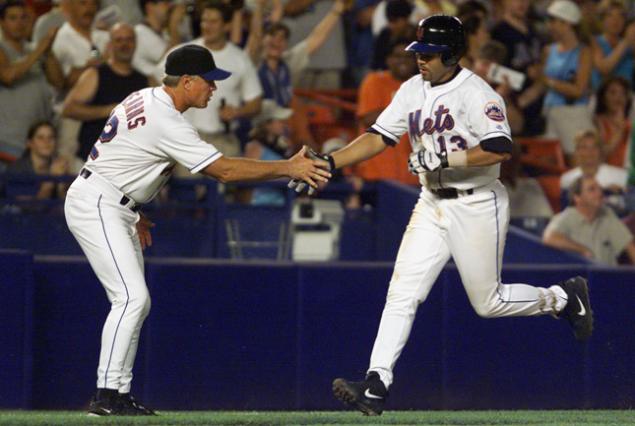
Edgardo Alfonzo, 3B
While Alfonzo is known as the best second baseman in team history, and he would become the only Mets second baseman to ever win a Silver Slugger in 1999, Alfonzo spent most of this decade playing third base.
In fact, Alfonzo’s breakout season was in 1997 when he finished 13th in MVP voting. In fact, that year he would be the best third baseman in all of baseball with a 5.6 fWAR. He’d be the second best hitter at the position with a 125 wRC+, and he would be the best defender at the position as well (even if he didn’t have a Gold Glove). In fact, his 2.1 defensive WAR that year is still 10th best in Mets history.
From 1995 – 1998, Alfonzo would predominantly play third for the Mets with his becoming a true everyday player in 1997. Alfonzo being a part of the everyday lineup that year would be no small part of that team turning the corner with their first season over .500 since 1990.
As we know, Alfonzo would finish that decade at second becoming part of the best defensive infield ever and accumulating big hit after big hit. Really, when you break it down and look at his play over this decade, you really have to wonder how the team has not yet inducted him into the Mets Hall of Fame.
Honorable Mention: Robin Ventura (Grand Slam Single); Howard Johnson (1991 All Star & Silver Slugger)
Rey Ordonez, SS
In his very first game with the Mets, Ordonez had to go down to his knees to get a relay throw from Gilkey, and from his knees, he’d twist and make a perfect throw to home plate to get Royce Clayton at the plate. That was the first of several defensive gems we would see from Ordonez.
Ordonez became the first homegrown Mets player to win multiple Gold Gloves. He was so great defensively he won as many Gold Gloves in the 1990s as Hall of Famers Ozzie Smith and Barry Larkin. Overall, with his play at shortstop, he is third all-time in Mets history in defensive WAR.
When that 1999 infield became the best defensive infield of all-time, Ordonez was their leader. He would set the Mets all-time single season mark for defensive WAR (4.0). He would also begin what would become the Major League best errorless streak at shortstop that season.
Overall, Ordonez was a human highlight reel at shortstop, and his play at the position was some of the best we have ever seen.
Honorable Mention: Dick Schofield (2.2 WAR); Jose Vizcaino (second most triples among MLB SS from 1994 – 1995)
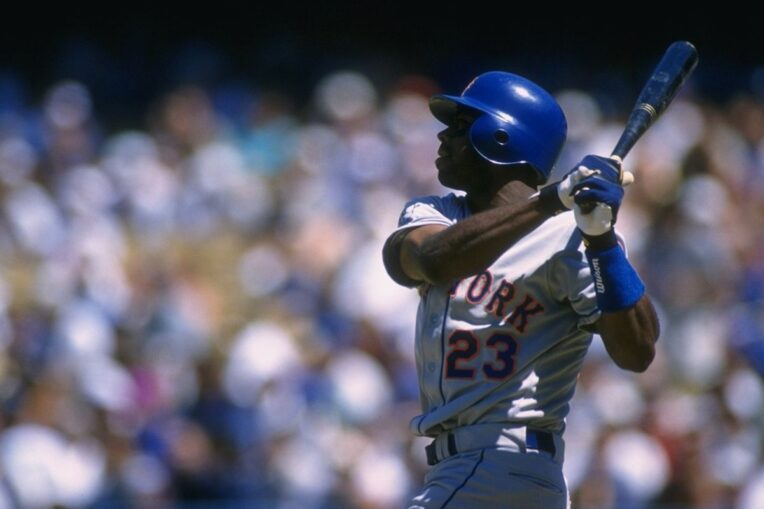
Bernard Gilkey, LF
In 1996, Gilkey had one of the greatest seasons in Mets history. He would hit .317/.393/.562 with 44 doubles, three triples 30 homers, and 117 RBI. In that season, he would set what was then the Mets all-time record for highest WAR in a season.
While that and some of the other Mets single season records he put up that year have been surpassed, Gilkey is still the Mets leader with 44 doubles in a season.
While Gilkey was not able to match that level of production again, he still put up good cumulative numbers with the Mets hitting .273/.357/.461 with a 10.3 WAR. In his three years, he would have the highest WAR of any Mets outfielder in this decade. In fact, by WAR, Gilkey is the fourth best Mets left fielder of all-time.
Honrable Mentions: Rickey Henderson (128 OPS+); Kevin McReynolds (5.0 WAR)
Lance Johnson, CF
No Mets player has ever hit more triples in a season than Johnson hit in 1996. That year, Johnson hit a Major League leading 21 triples. What is really remarkable about that is he was not once thrown out trying to stretch a double into a triple.
Looking deeper, that 1996 season was one of the more impressive “speed” seasons we have seen from a Mets player. In addition to the 21 triples, Johnson had 50 stolen bases. In total, he would have a 7.2 WAR. Up until that point in Mets history, it was the second highest WAR of any Mets position player.
In total, Johnson would play 232 games for the Mets hitting .326/.369/.458 with 41 doubles, 27 triples, 1o homers, 93 RBI, and 66 stolen bases. His 120 wRC+ was the second highest among Mets outfielders in the decade, and it stands as the second best for a Mets center fielder in team history.
Honorable Mention: Brian McRae (103 wRC+), Darryl Hamilton (1.2 WAR)
Bobby Bonilla, RF
Bonilla was given the biggest contract in Mets history, and while seen as a disappointment, he did put up good numbers as a member of the Mets. In fact, over his time with the Mets, he would hit .270/.356/.495 with a 126 wRC+, which is second best all-time among Mets right fielders.
Putting emotion aside, in his first stint with the Mets, he hit lower than .280 once, never had an OBP lower than .348, and his OPS was over .878 in all but his first season with the team. He was also a two time All-Star who is in the top 20 all-time in Mets history in homers. In fact, among Mets right fielders, he ranks third in homers and fifth in RBI.
Overall, Bonilla was not popular, but he was a productive player. As we know his legacy with the Mets will always be his deferred payments. While a source of bemusement, his final act as a member of the New York Mets did pave the way for the team to make the Mike Hampton trade, which not only helped them win a pennant, but it would also pave the way for them drafting David Wright.
Honorable Mention: Butch Huskey (55 HR); Darryl Strawberry (6.3 WAR in 1990)
Dave Magadan, UTIL
With an 8.6 fWAR, Magadan has the seventh highest WAR for a Mets player in the decade. That’s the third highest mark among Mets players who have played over 100 games at two different positions in the decade.
His 127 wRC+ is the best among players who played multiple positions.
His best season was 1990. That season, he had a 4.6 WAR while hitting .328/.417/.457 with 28 doubles, six triples, six homers, and 72 RBI. That year, he’d finish third in the league in batting average and 10th in OPS.
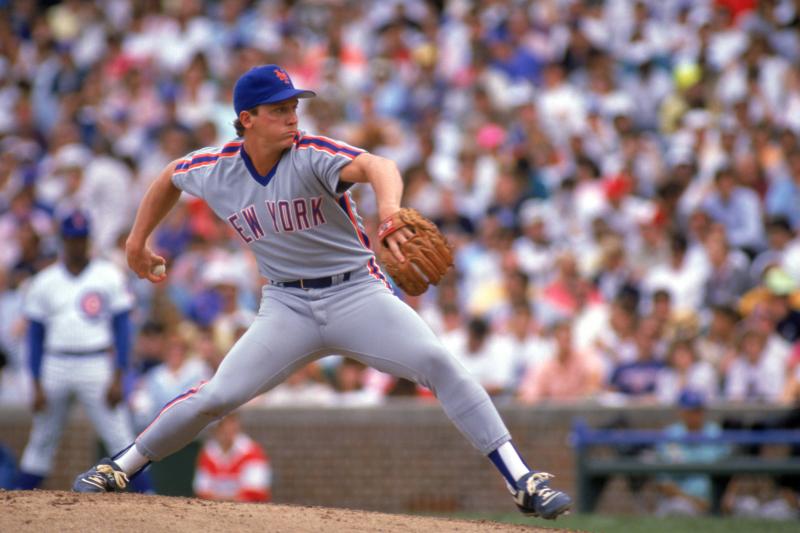
David Cone, RHP
On the final day of the 1991 season, Cone would tie Tom Seaver‘s National League record for most strikeouts in a game. Cone’s complete game shut out to end a year where the Mets had their first losing record in eight years speaks to the tenacity and ability which marked Cone’s Mets career, and really, his entire Mets career.
During the decade, Cone led all Mets starting pitchers in FIP, K%, K/BB%, K/9, complete games, and shutouts. He was also second in ERA and strikeouts. Additionally, he was third in wins, innings pitched, and K/BB. He was also and fourth in WHIP.
Looking at the numbers, it is all just a long-winded way of saying Cone was a dominant pitcher when he was with the Mets. While at times overshadowed and not quite looked upon as an ace, he was absolutely that for the early 1990s Mets teams.
Honorable Mention: Dwight Gooden (707 K); Bobby Jones (1997 All Star)
Sid Fernandez, LHP
In some ways, El Sid would have been better appreciated in modern times than he was during an era where pitcher wins were more highly valued. While Fernandez had a losing record in the 1990s for the Mets, he would still post very good numbers for the team.
From 1990 – 1993, he had a 3.02 ERA, 123 ERA+, and a 3.31 FIP. He would strike out batters at a good clip with a 21.6 strikeout percentage. His 9.7 fWAR in the decade was easily the best for any Mets starting pitcher.
Fernandez’s 0.986 WHIP in 1993 remains the best for any Mets left-handed pitcher. That is a list which includes Jerry Koosman and Johan Santana. His H/9 that season was the best of any Mets left-handed starter not named Fernandez. This is just an example of how good and overlooked of a pitcher he was in his Mets career.
Honorable Mention: Al Leiter (128 ERA+), Frank Viola (last Mets LHP with 20 wins)
John Franco, RP
To this day, Franco is not just the Mets all-time leader in saves, but he is the all-time leader in saves by a left-handed pitcher. He also has appeared in more Mets games than any other pitcher in Mets history.
While known for his edge of the seat style of closing games, Franco almost always got the job done. That was especially the case during the the 1990 and 1994 seasons where he led the league in saves. It should be noted during that 1994 season Franco finished seventh in Cy Young voting and 20th in MVP voting.
He really came up big in big moments. While it is overlooked, Franco was the winning pitcher in the game where Todd Pratt hit the walk-off clinching the Mets first ever NLDS series victory. He also came up big when he put forth a full press effort to entice Piazza to stay with the Mets organization past the 1998 season. That included him giving up his number to welcome the future Hall of Famer.
Honorable Mentions: Turk Wendell (130 ERA+); Dennis Cook (140 ERA+)


